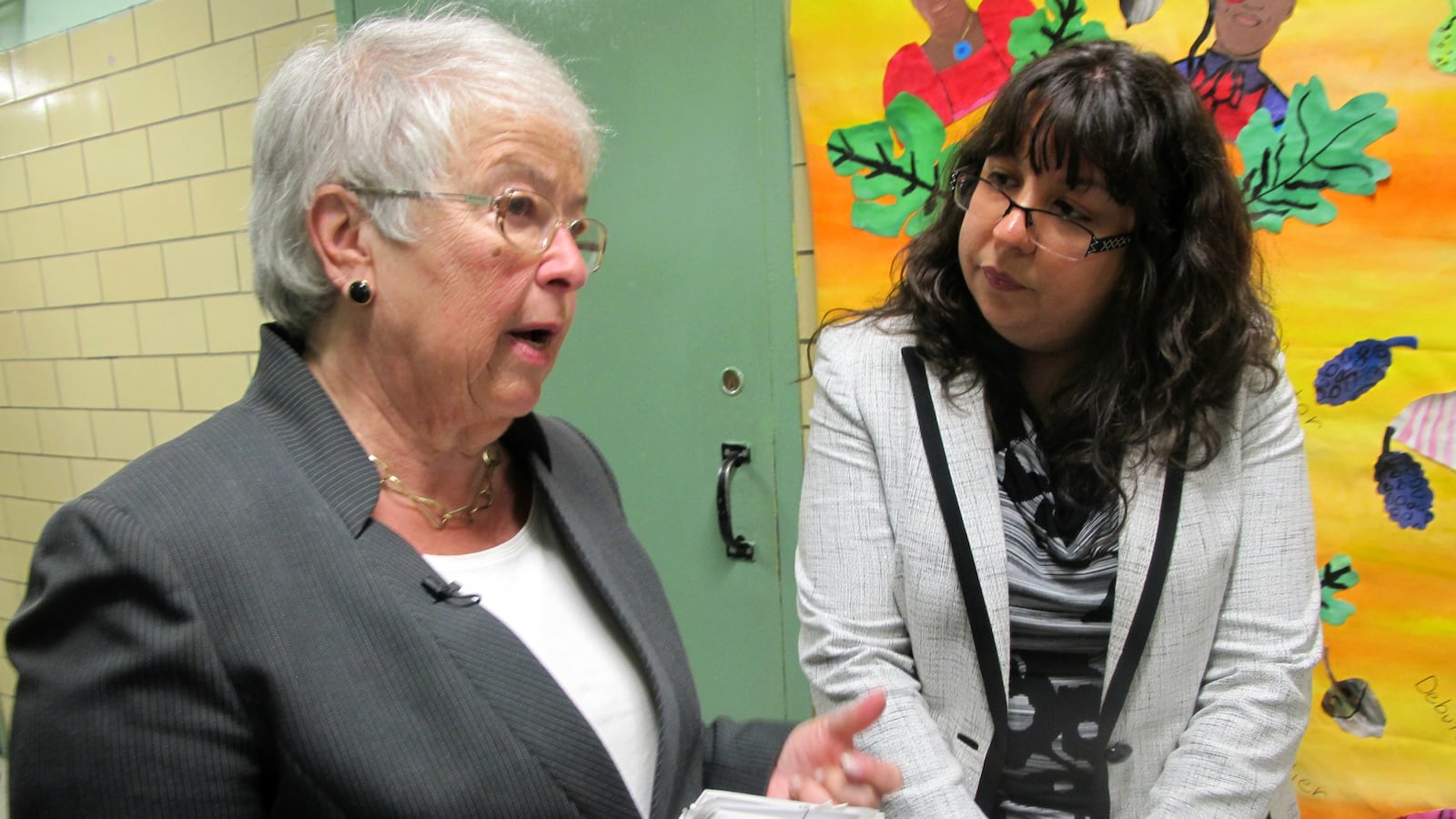Chancellor Carmen Fariña told lawmakers last week that 94 of New York City’s most troubled schools must meet “clear benchmarks” or face serious consequences — including closure.
But if parents or members of the public want to find out what those goals are, it isn’t easy.
The city has refused to release the one-page lists of goals that each school received in May, which include targets for attendance, test scores, and graduation rates. The education department is instead referring parents to school improvement plans posted online.
However, those plans are hardly parent-friendly: They can stretch to nearly 100 pages, lean heavily on technical jargon, and mix together high-stakes goals created by the city and others crafted by schools themselves.
That leaves parents without a simple way to learn how exactly the city expects each school in the city’s expensive new “Renewal” turnaround program to improve. In response, parent advocates are calling for the city to publish straightforward lists of the goals for the 94 schools.
“We believe that it is really important for those goals to be public,” said Natasha Capers, a public school parent and coordinator at the Coalition for Educational Justice, which includes many parent-led advocacy groups. “It gives accountability not just to schools, but to the system.”
The schools in the nearly $400 million Renewal program, which serve a disproportionate share of needy students and have a history of low academic achievement, are under intense pressure to make quick rebounds. The city has given them until 2017 to post academic gains, and many are also at risk of state takeover if they fail to show rapid improvement.

The city spelled out the academic gains each school must make in lists it sent schools this spring. Those lists have not been made public, and the goals were not included in the latest round of school progress reports designed for parents.
Some of the goals are included in lengthy documents posted on school websites. But the plans themselves are hard to locate, since they’re posted far down on each school’s statistics page. Within the plans, the Renewal goals are mixed in with separate school-created goals.
For instance, the plan for Foundations Academy, a Renewal high school in Brooklyn, says that one of its annual goals is for most teachers to teach two “coherent, common core aligned lessons per semester.” The school’s city-provided graduation goal is embedded in another section, where it says simply that the school anticipates a 38.6 graduation rate next June.
In some cases, the city-issued targets are missing, according to a Chalkbeat review of a dozen plans. Other plans appear to contain errors. For example:
- The plan for P.S. 50 in Manhattan states that by June 2016, all of its teachers will analyze test results to modify their teaching “as measured by ————-.” Confusingly, the school’s listed academic goal is to increase the share of students who score at the lowest level on state exams by 5 percent.
- The plan for I.S. 313 in the Bronx gives the school’s attendance goal, then says, “Other benchmarks for 2015-15 include: ____________________.” It continues, “IS 313 has made substantial progress toward meeting these benchmarks and is poised to demonstrate great improvements in students’ academic outcomes this year.” An academic goal is included in a different section.
Schools themselves received simpler lists of goals in May. Those clearly state the schools’ attendance rates and certain academic measures alongside the targets they must meet by 2016 and 2017.
The city would not release those lists to Chalkbeat, and education department spokeswoman Devora Kaye would not say whether they will be made public. Instead, she said the individual goals would be embedded in the online improvement plans, and that parents can also ask schools directly for the goals.
“The DOE Renewal School staff continues to work in close partnership with schools to ensure they are demonstrating evidence of improved student outcomes,” Kaye said in a statement.
David Bloomfield, an education professor at Brooklyn College and the CUNY Graduate Center, said the city’s failure to make the Renewal goals accessible runs counter to the de Blasio administration’s promise to closely involve parents in those schools. It also will make it harder for the public to judge whether the expensive Renewal program is a success, he said.
“The lack of transparency,” Bloomfield said, “makes the finish line more ambiguous.”

